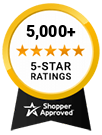Before you take the time to learn how to recognize the symptoms of a stroke, you should understand what exactly is going on as someone experiences a stroke. The National Stroke Association offers up a nice article about stroke at their website, and in it they refer to a stroke as a “brain attack”. Is that really what is going on? A stroke is technically the moment when a blood clot blocks an artery or when a blood vessel breaks and the flow of blood to the brain is interrupted. Any time this happens, the brain’s cells begin to die off fairly quickly and serious damage tends to occur.
The frustrating thing is that around 80% of the strokes that occur are actually preventable. Usually this is done by working with a medical professional to identify any risk factors and then using the best techniques to reduce the likelihood of stroke. What are the techniques? Usually they include:
Reduce The Risk
• Addressing high blood pressure – having blood pressure that is too high is one of the major causes for stroke, but this condition is easily treated with medication, diet and exercise.
• Recognizing Afib – the condition known as abnormal heartbeat or Afib increases the risk of stroke by roughly 500%! Yet it can be easily diagnosed and treated.
• Reducing alcohol consumption – more than two drinks per day bumps up the risk for stroke substantially.
• Quit smoking (Nicoderm)– smoking destroys the walls of blood vessels, clogs arteries and increases blood pressure – all of which increase risks for stroke.
• Reducing cholesterol – whether it is genetic or dietary, your cholesterol level can clog arteries and increase risks substantially. • Exercise – improving circulation and consuming low amounts of calories will help to cut risks.
• Identify circulatory issues – if you have problems with circulation, you are increasing your risks. Anemia, sickle cell disease, and anything that could allow fatty deposits in the arteries should be addressed properly.
Okay, so we’ve looked at what a stroke technically is and some of the main causes for a stroke, but how can we tell if someone (including ourselves) is having a stroke? The American Heary Association provides a good list of warning signs at their site, including:
• Sudden and severe headache with no discernable cause
• Sudden loss of coordination or trouble walking
• Sudden trouble seeing clearly with one or both eyes
• Sudden onset of confusion accompanied by difficulty with speech
• Sudden numbness in the body
The National Stroke Association also makes its FAST system available online too. This uses the acronym F.A.S.T to help someone test and identify if stroke symptoms are present. They translate to:
• F = Face – ask the individual to smile and watch to see if one side of the face seems to “droop”
• A = Arms – tell the individual to raise their arms, and monitor to see if one of their arms is drifting downward
• S = Speech – say a very simple phrase and ask the person to repeat it. Is their speech slurred or odd?
• T= Time – this means that “time is of the essence” and you have to call emergency services immediately.
As you are calling for help, try to also remember the time that the symptoms started. This is because there is a somewhat miraculous medication that the FDA can use in the first three hours after the signs of a stroke have appeared. This medication will break up any clots (if that is the cause of the problem) and help to reduce the amount of damage done to the brain over the short and long term.
It is interesting to note that women may have some symptoms unique to their gender. For instance, sudden bouts of hiccups, nausea, general weakness, palpitations, chest pain, and shortness of breath have all been observed in female patients suffering strokes, in addition to traditional symptoms as well.
So, you identify the signs, call for help, note the time when symptoms started, and get your friend, loved one or even yourself to the hospital. What happens next? Depending upon the time of the event and the type of stroke you will be treated with either “thrombolytics” that are drugs used to get blood flowing back to the brain, a t-PA or tissue plasminogen activator which is another drug that works to dissolve clots as a means of restoring blood flow, or a range of different “systems” that can be effective even when employed outside of the three hour window.
What about the length of recovery time? Many patients believe that they have only a few weeks or months in which to show some improvement and then after that the amount of recovery diminishes substantially. This, fortunately, is one of the most common stroke myths and is a very large fallacy. The fact of the matter is that a stroke patient will just continue to recover in the years after the event. They will need to monitor the issues that led to the stroke and follow the protocols recommended by their physicians, but generally, the outcome is not as horrific as many are led to believe.
By now it is fairly clear that stroke symptoms are hardly covert or difficult to understand and identify. The main issue of concern is that the person observing the symptoms is going to have to act fast if they want to improve their friend or loved one’s chances for a better and more successful recovery and do not want to see them bedridden or on a wheelchair.
If you are a caregiver for an elderly person or spouse, you will want to understand if they are someone at risk for stroke and be sure to keep a checklist on hand to see if they are displaying some of the earliest warning signs, such as sudden headache or loss of balance. These are often the symptoms that really cue someone to suspect a stroke, and by the time speech and facial muscles are impacted, the stroke can be said to be in “full force”.
Strokes, as we have learned, are entirely preventable, and even when they do occur it is possible to limit the amount of damage that they manage to do to the brain. It demands fast action and good medical care, but knowledge and preparedness are also great tools in the fight.
It is also important to remember that post-stroke treatments are getting more and more aggressive and successful and that medications and devices can generate good results outside of the usual three hour window. This does not mean that you should hesitate to call for assistance, but it does mean that you (and a stroke victim) should not despair over the implications of the event. With fast treatment and good therapy millions of stroke survivors have gone on to lead extremely happy and healthy lives.
.png)


 US Dollar
US Dollar  Canadian Dollar
Canadian Dollar 





























.png)
